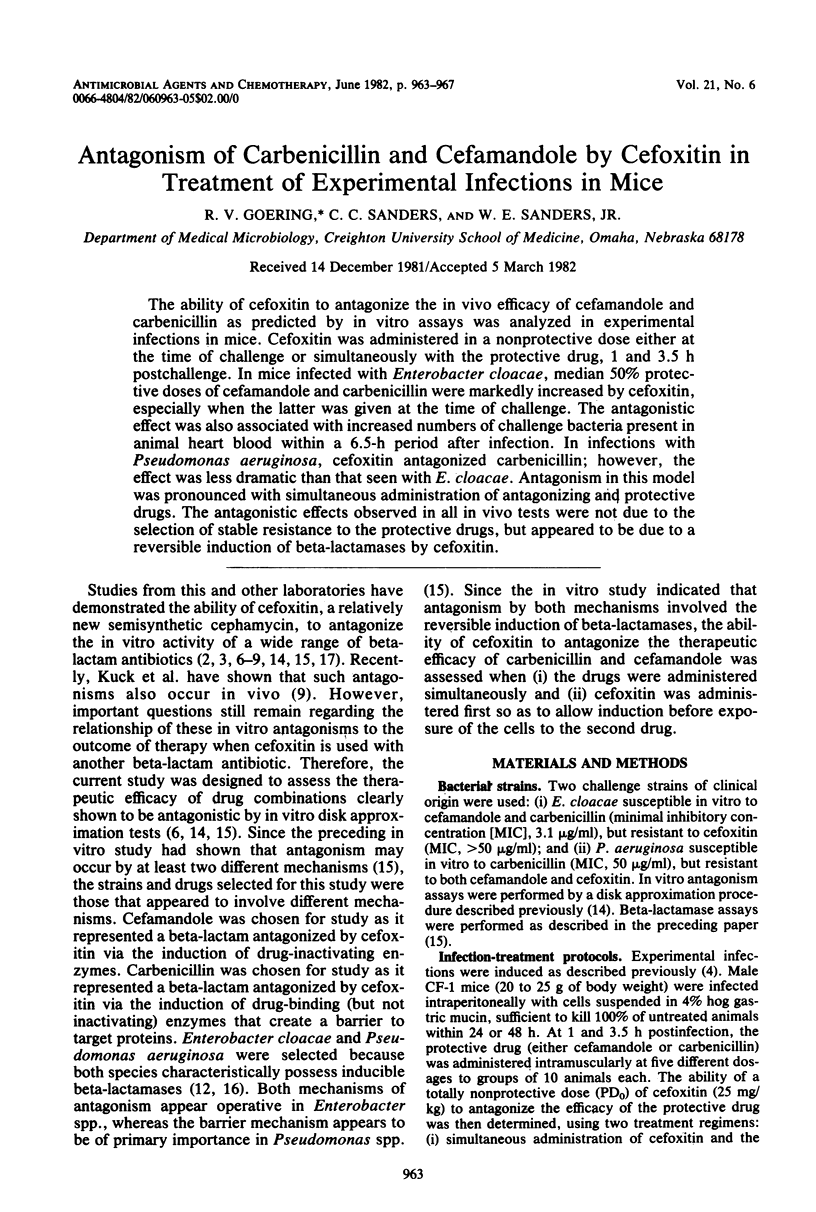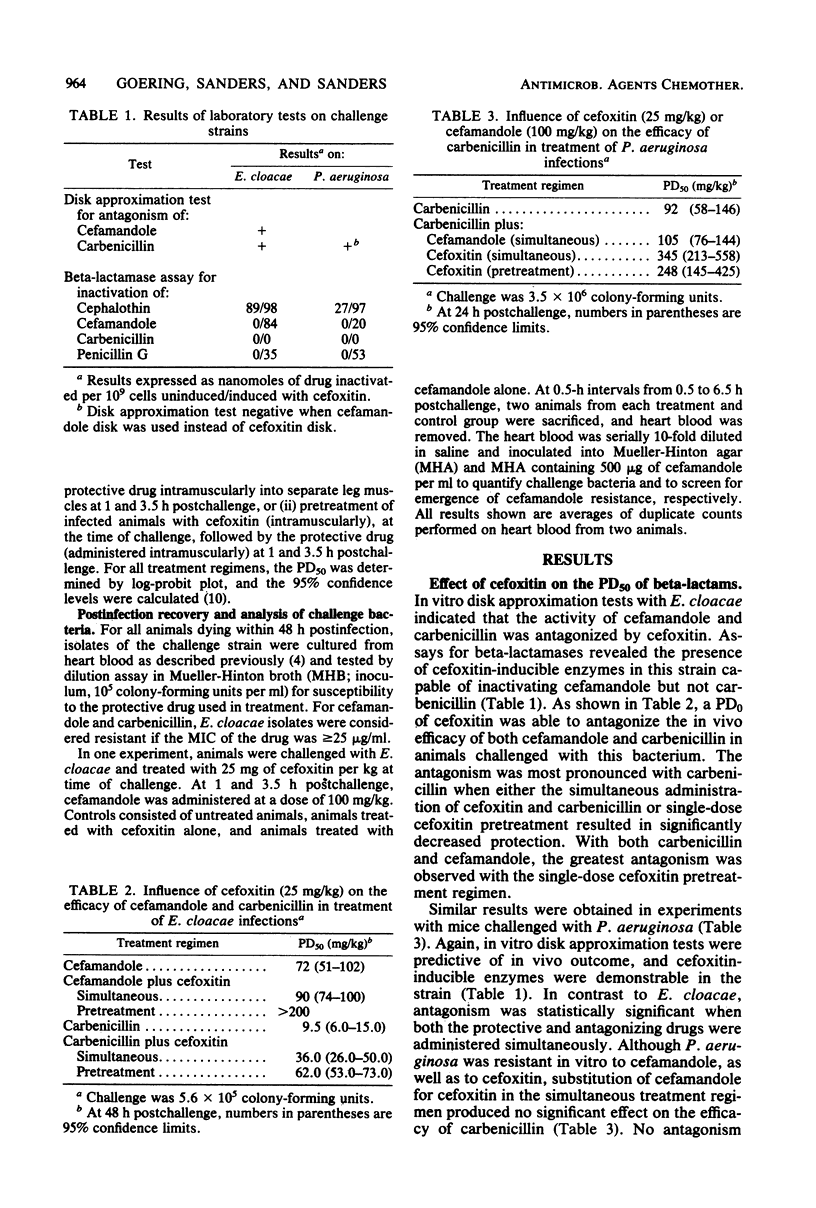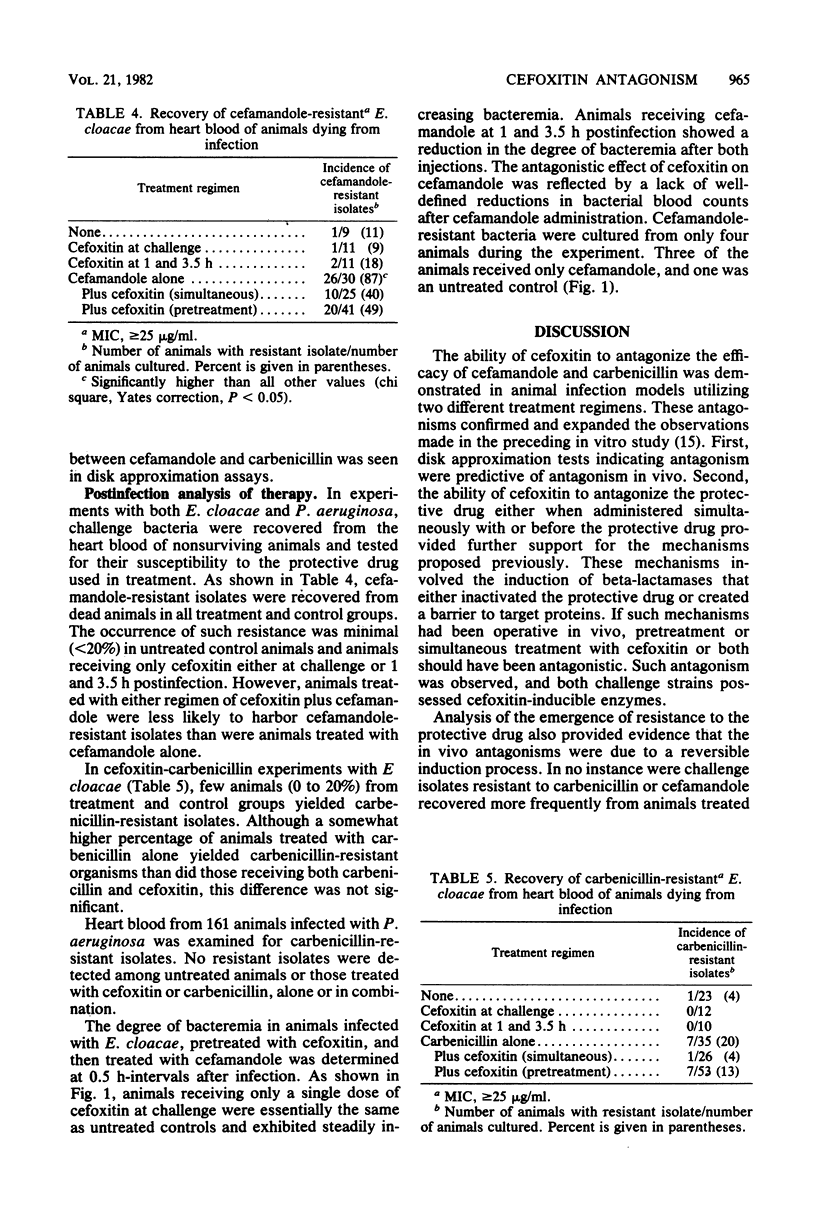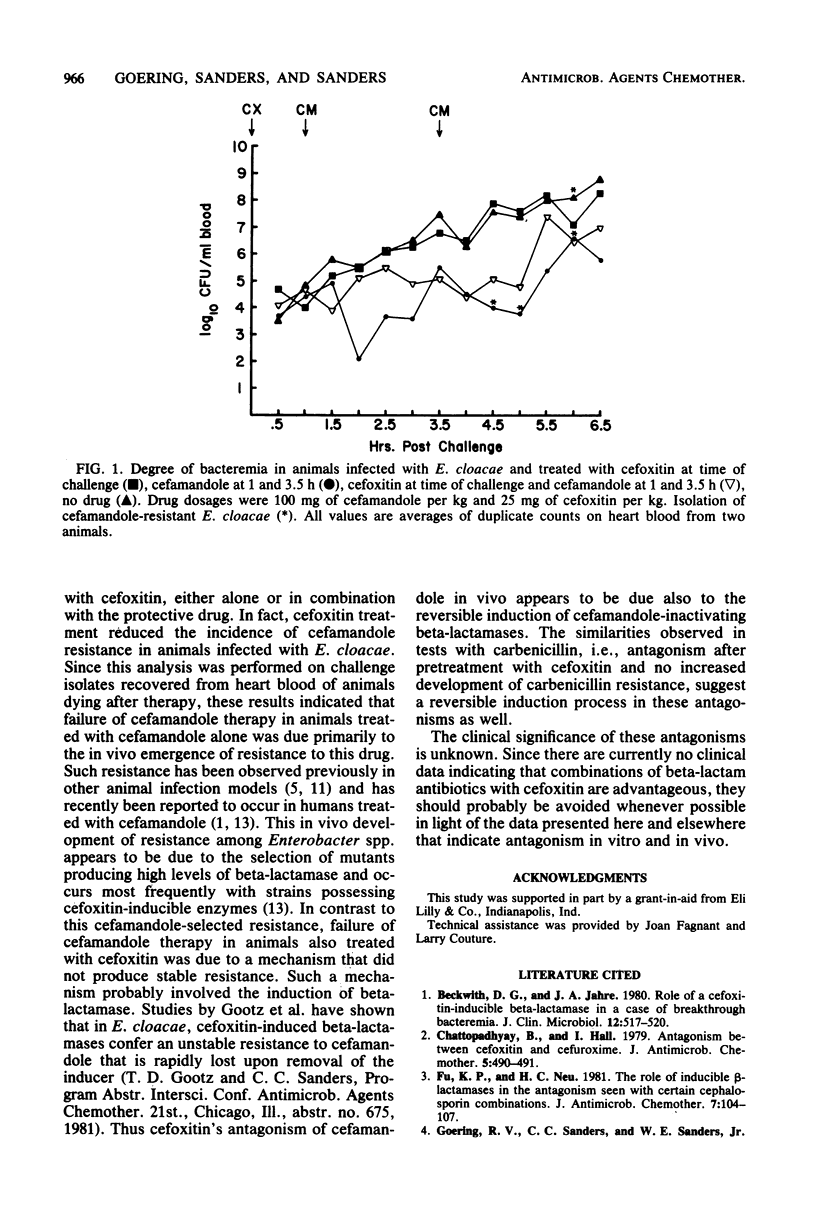Abstract
The ability of cefoxitin to antagonize the in vivo efficacy of cefamandole and carbenicillin as predicted by in vitro assays was analyzed in experimental infections in mice. Cefoxitin was administered in a nonprotective dose either at the time of challenge or simultaneously with the protective drug, 1 and 3.5 h postchallenge. In mice infected with Enterobacter cloacae, median 50% protective doses of cefamandole and carbenicillin were markedly increased by cefoxitin, especially when the latter was given at the time of challenge. The antagonistic effect was also associated with increased numbers of challenge bacteria present in animal heart blood within a 6.5-h period after infection. In infections with Pseudomonas aeruginosa, cefoxitin antagonized carbenicillin; however, the effect was less dramatic than that seen with E. cloacae. Antagonism in this model was pronounced with simultaneous administration of antagonizing and protective drugs. The antagonistic effects observed in all in vivo tests were not due to the selection of stable resistance to the protective drugs, but appeared to be due to a reversible induction of beta-lactamases by cefoxitin.
Full text
PDF




Selected References
These references are in PubMed. This may not be the complete list of references from this article.
- Beckwith D. G., Jahre J. A. Role of a cefoxitin-inducible beta-lactamase in a case of breakthrough bacteremia. J Clin Microbiol. 1980 Oct;12(4):517–520. doi: 10.1128/jcm.12.4.517-520.1980. [DOI] [PMC free article] [PubMed] [Google Scholar]
- Chattopadhyay B., Hall I. Antagonism between cefoxitin and cefuroxime. J Antimicrob Chemother. 1979 Jul;5(4):490–491. doi: 10.1093/jac/5.4.490. [DOI] [PubMed] [Google Scholar]
- Fu K. P., Neu H. C. The role of inducible beta-lactamases in the antagonism seen with certain cephalosporin combinations. J Antimicrob Chemother. 1981 Jan;7(1):104–107. doi: 10.1093/jac/7.1.104. [DOI] [PubMed] [Google Scholar]
- Goering R. V., Sanders C. C., Sanders W., Jr Comparison of BL-S786 with cephalothin, cefamandole and cefoxitin in vitro and in treatment of experimental infections in mice. J Antibiot (Tokyo) 1978 Apr;31(4):363–372. doi: 10.7164/antibiotics.31.363. [DOI] [PubMed] [Google Scholar]
- Grimm H. Bakteriologische Untersuchungen zum Antagonismus zwischen Acylureidopenicillinen und Cephalosporinen. Arzneimittelforschung. 1980;30(6):999–1000. [PubMed] [Google Scholar]
- Kammer W., Neuhaus B. In-vitro-Antagonismus von Cefoxitin und Azlozillin im Agar-Diffusionstest. Offentl Gesundheitswes. 1978 Sep;40(9):621–621. [PubMed] [Google Scholar]
- Kuck N. A., Testa R. T., Forbes M. In vitro and in vivo antibacterial effects of combinations of beta-lactam antibiotics. Antimicrob Agents Chemother. 1981 Apr;19(4):634–638. doi: 10.1128/aac.19.4.634. [DOI] [PMC free article] [PubMed] [Google Scholar]
- Miller A. K., Celozzi E., Pelak B. A., Birnbaum J., Stapley E. O. In vivo inoculum effect and resistance selection with cefamandole and cefoxitin against Enterobacter cloacae in mice. J Antimicrob Chemother. 1980 Nov;6(6):804–806. doi: 10.1093/jac/6.6.804. [DOI] [PubMed] [Google Scholar]
- Richmond M. H., Sykes R. B. The beta-lactamases of gram-negative bacteria and their possible physiological role. Adv Microb Physiol. 1973;9:31–88. doi: 10.1016/s0065-2911(08)60376-8. [DOI] [PubMed] [Google Scholar]
- Sanders C. C., Moellering R. C., Jr, Martin R. R., Perkins R. L., Strike D. G., Gootz T. D., Sanders W. E., Jr Resistance to cefamandole: a collaborative study of emerging clinical problems. J Infect Dis. 1982 Jan;145(1):118–125. doi: 10.1093/infdis/145.1.118. [DOI] [PubMed] [Google Scholar]
- Sanders C. C., Sanders W. E., Jr Emergence of resistance to cefamandole: possible role of cefoxitin-inducible beta-lactamases. Antimicrob Agents Chemother. 1979 Jun;15(6):792–797. doi: 10.1128/aac.15.6.792. [DOI] [PMC free article] [PubMed] [Google Scholar]
- Sanders C. C., Sanders W. E., Jr, Goering R. V. In vitro antagonism of beta-lactam antibiotics by cefoxitin. Antimicrob Agents Chemother. 1982 Jun;21(6):968–975. doi: 10.1128/aac.21.6.968. [DOI] [PMC free article] [PubMed] [Google Scholar]
- Sykes R. B., Matthew M. The beta-lactamases of gram-negative bacteria and their role in resistance to beta-lactam antibiotics. J Antimicrob Chemother. 1976 Jun;2(2):115–157. doi: 10.1093/jac/2.2.115. [DOI] [PubMed] [Google Scholar]
- Waterworth P. M., Emmerson A. M. Dissociated resistance among cephalosporins. Antimicrob Agents Chemother. 1979 Apr;15(4):497–503. doi: 10.1128/aac.15.4.497. [DOI] [PMC free article] [PubMed] [Google Scholar]


